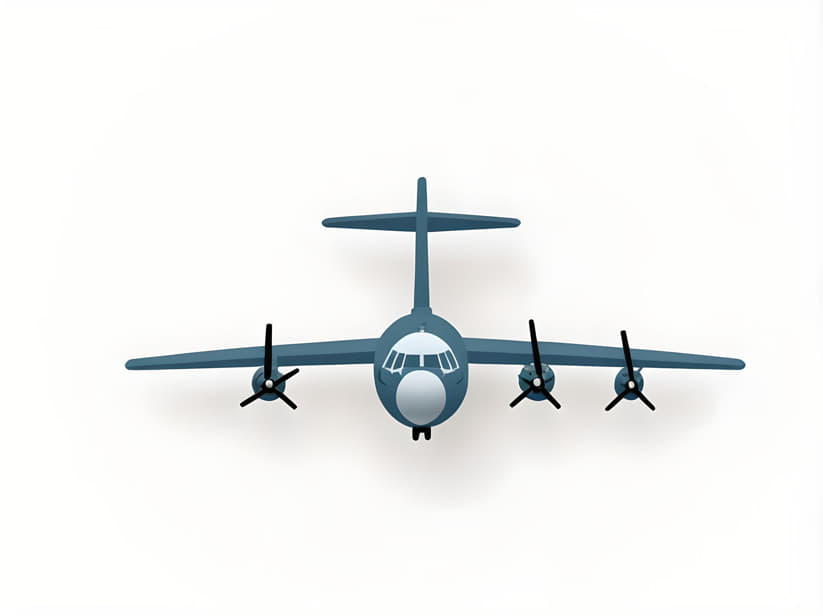
The Lockheed C-130 Hercules is a versatile and iconic military transport aircraft known for its rugged design, adaptability, and extensive operational history. One of its distinctive features is its use of propellers, which serve several critical purposes essential to its performance and operational capabilities. This article explores why the C-130 Hercules utilizes propellers, detailing their functions, advantages, and contributions to the aircraft’s success.
Historical Context and Design Evolution
Origins of Propeller Usage: The C-130 Hercules was developed during the 1950s by Lockheed Corporation to meet the United States Air Force’s (USAF) requirement for a tactical transport aircraft. At the time of its inception, propeller-driven aircraft were still prevalent due to their reliability, efficiency, and suitability for various mission profiles, including short takeoffs and landings (STOL).
Advantages Over Jet Engines: During the design phase of the C-130, propeller-driven engines offered several advantages over jet engines, especially for tactical transport roles:
- Fuel Efficiency: Propeller-driven engines are generally more fuel-efficient at lower speeds and altitudes, making them suitable for extended endurance and operational flexibility without requiring frequent refueling.
- Short Takeoff and Landing (STOL) Capability: The design of the C-130 Hercules incorporates propellers optimized for STOL operations, enabling it to operate from shorter and less prepared airstrips compared to jet-powered aircraft. This capability is crucial for military transport missions, including airlifting troops, cargo, and equipment in diverse and austere environments.
- Versatility in Mission Profiles: Propeller-driven aircraft like the C-130 can perform a wide range of missions beyond traditional transport roles, including aerial refueling, electronic warfare, and humanitarian relief operations. The ability to operate in both civilian and military settings underscores the versatility and adaptability of propeller-driven designs.
Functions of Propellers on the C-130 Hercules
Propulsion and Thrust: The primary function of propellers on the C-130 Hercules is to provide thrust and propulsion necessary for sustained flight. The aircraft typically employs four turboprop engines, each driving a large propeller assembly. These propellers convert the rotational energy of the engines into thrust by accelerating a large volume of air rearward, generating forward motion and lift for the aircraft.
Enhanced Control and Maneuverability: Propeller-driven aircraft offer enhanced control and maneuverability compared to jet-powered counterparts, particularly at lower speeds and during takeoff and landing phases. The variable pitch of propeller blades allows pilots to optimize thrust output and adjust engine performance to suit different flight conditions and operational requirements. This capability enhances safety and operational flexibility, especially in challenging environments or during critical mission phases.
Operational Efficiency and Reliability: Propeller-driven engines are renowned for their operational efficiency and reliability, requiring less maintenance and offering longer service life compared to complex jet engines. The robust design of propeller assemblies on the C-130 Hercules contributes to its reputation for reliability and mission readiness, ensuring sustained operational capability in diverse operational theaters and environments.
Strategic and Tactical Applications
Military Transport and Cargo Operations: As a tactical transport aircraft, the C-130 Hercules plays a pivotal role in military logistics and rapid deployment scenarios. Its propeller-driven design enables it to transport heavy payloads, including troops, vehicles, and humanitarian aid, over long distances and into remote areas with limited infrastructure. The aircraft’s ability to access austere airstrips and conduct rapid airlift operations enhances military mobility and operational effectiveness across global theaters of operation.
Specialized Mission Configurations: Beyond standard transport roles, the C-130 Hercules can be configured for specialized missions, such as aerial refueling, airborne command and control, and medical evacuation. The versatility of propeller-driven engines allows the aircraft to adapt to evolving mission requirements and support multi-role operations essential for modern military and humanitarian missions.
The utilization of propellers on the Lockheed C-130 Hercules aircraft is a testament to its enduring legacy as a versatile and reliable military transport platform. Propeller-driven engines offer distinct advantages in terms of fuel efficiency, operational flexibility, and mission adaptability, making them well-suited for tactical transport roles and specialized mission configurations. As the C-130 continues to serve global military forces and humanitarian organizations, its propeller-driven design remains integral to its success in meeting diverse operational challenges and maintaining a steadfast commitment to mission readiness and operational excellence.